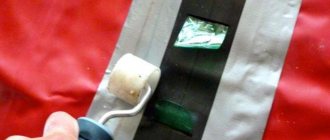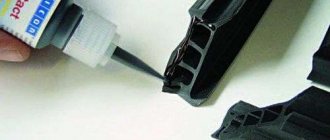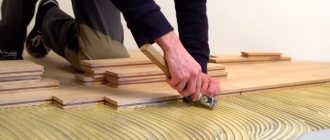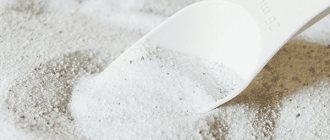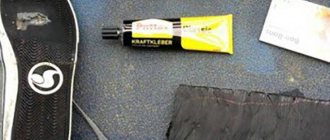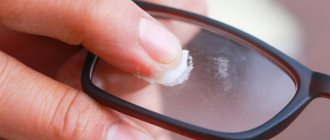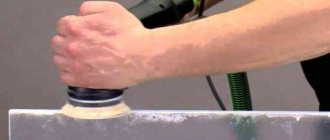Adhesive options for plexiglass
Speaking about popular compounds that can be used to glue plexiglass, it is worth focusing on the following:
- compositions of the Acrifix family, specially developed for acrylic-based materials;
- mixtures based on dichloroethane;
- acetic acid and its essence;
- compositions of the Colacril family;
- Cosmofen glue. It is also used to fasten wood and plexiglass;
- adhesives produced by Era-Henkel: Moment, Moment - seconds and others.
Acrifix 117 glue
One of the most popular compositions for gluing plexiglass has a long-standing and well-deserved popularity among home craftsmen.
It has the following advantages:
- excellent connection strength;
- high transparency of suture material;
- short setting time;
- low toxicity, especially compared to dichloroethane;
- high penetrating power makes strong squeezing of parts unnecessary.
Unfortunately, Acrifix 117 also has disadvantages that make it difficult for home craftsmen to access:
- packaging in liter jars;
- high price.
Acrifix 117
Experts recommend adding one tenth of the volumetric part of Acrifix 116 to Acrifix 117. This helps to better fill micro-irregularities and increase adhesion.
Acrifix 116 glue
The composition is close to grade 117, but differs in greater thickness and viscosity. It is packaged in convenient 100 ml tubes, which makes it easy to use in home workshops.
It can be used to glue rough surfaces that are not perfectly smooth.
Dichloroethane
Budget replacement for expensive formulations. Sold in chemical components stores and radio parts stores. If the surfaces are perfectly smooth and even, dichloroethane can be used to glue them together without any additives. Apply it using a medical syringe into the gap between the parts to be joined. The seam is perfectly smooth and highly transparent. If you properly prepare the surfaces, the seam will be free of bubbles.
If the surfaces are not perfectly smooth, then there is another way to glue them. A little plexiglass shavings (sawdust) is poured into a bottle of dichloroethane; after dissolution, a thick composition is obtained that can be applied with a spatula or wire.
Dichloroethane
In the room where they work with dichloroethane, it is necessary to have high-quality ventilation.
Vinegar essence
This is another inexpensive substitute for purchased professional compounds. Allows you to glue plexiglass quite firmly.
Serious internal mechanical stresses arise at the bends of the parts, which can lead to cracking of the plexiglass.
Experts recommend using vinegar essence to glue small products that are not subject to heavy loads.
Glue colacril 20 and colacril 30
The Colacril family serves as a functional replacement for the expensive Acrifix family of adhesives.
Colacril 20 is highly fluid, while Colacril 30 is viscous.
Experts mix them to obtain the optimal consistency for each specific compound.
The compositions allow you to glue parts and get a beautiful and even seam, transparent and without bubbles.
The disadvantage of the Colacril family compared to Acrifix is the formation of small cracks at the bend of plexiglass, caused by internal mechanical stresses. At the same time, the appearance deteriorates, but the strength is maintained.
Secondary glue moment and Cosmofen
Most second adhesives are based on cyanoacrylate. Regardless of the type of packaging - in metal, plastic tubes or bottles with a narrow spout for application - they are very similar in their properties.
A common property is that they do not dissolve plexiglass, but create an intermediate adhesive layer.
Therefore, experts do not recommend using them for connections subject to any loads. The most they can do is grab a small part for a toy or decoration.
The adhesive layer is opaque, the joint is very noticeable.
Cosmofen
Dangerous! “Moment” can glue the skin of your fingers so much that you will have to see a doctor. The use of protective gloves is mandatory.
Overview of adhesives
Let's look at the pros and cons of the main types of glue.
Acrifix 116 and 117
Acrifix is one of the most popular types of glue. Often used in mass production. Many experts consider it the best choice for plexiglass. Contains a substance that dissolves the upper layers of the glued plates, due to which, when dry, they form a monolith. This gluing method is also called “cold welding”.
Acrifix 116 adhesive is excellent for gluing plexiglass parts; when dry, it forms a monolith
The brands differ from each other in thickness: 117 is very fluid, 116 is more viscous. For gluing rough and uneven surfaces, it is better to choose the second option. If you mix grades 117 and 116 in a ratio of 10:1, you can achieve better filling of microcracks and significantly increase adhesion.
Acrifix has the following advantages:
- transparency of the seam;
- setting speed;
- high penetrating power, due to which the parts do not need to be pressed tightly against each other;
- relatively low toxicity;
- strength and reliability of the connection.
The disadvantages of this product include its high cost, and it is also difficult to find on sale. Acrifix 117 is only sold in liter containers, which is not suitable for everyone. Acrifix 116 is packaged in 100 ml tubes.
COLACRIL 20 and 30
The COLACRIL group is cheaper than Acrifix, but has similar properties.
COLACRIL glue is cheaper than the Acrifix series glue, but at the same time very similar in properties
COLACRIL 20 has a fairly liquid and flowing consistency, 30 is viscous. They can be mixed to obtain the desired thickness. Proportions are selected depending on the thickness and type of plates.
The advantages of this glue include:
- transparent seam without bubbles;
- strength and reliability;
- the ability to select the desired density by mixing two brands.
The disadvantage of this glue is that when it comes into contact with a fold of plexiglass, it leads to the appearance of small cracks. This degrades both the appearance and strength of the material.
"Moment"
For plexiglass, this product is used only in extreme cases and only if you need to glue a small, lightweight element, for example, in a decorative product. The “moment” does not dissolve the surface, so the connection cannot withstand even a small load.
Moment glue is not suitable for gluing plexiglass; the seam turns white over time and collapses at the slightest physical impact
Pros of this glue:
- cheapness and availability;
- many types of packaging.
Disadvantages of “Moment” when working with plexiglass:
- extreme fragility of the connection;
- whitening of the seam, which makes the joint stand out and unaesthetic.
How to glue plexiglass together
To glue plexiglass together, you need to study the important features of this process. You should first prepare the material, wipe it with ethyl alcohol and degrease the surface, this will ensure better adhesion. The product must be clean and smooth.
Standard method
Plexiglas is usually glued using popular adhesives containing acrylic, solvent or epoxy resin. But to get a strong and wear-resistant seam, you need to do everything correctly.
So how to glue plexiglass at home? The following instructions will help with this:
- The surface is first degreased. A cloth or napkin is moistened with solvent or gasoline, and then the surfaces on which the glue will be applied are wiped well;
- Next, the elements of the product must be fixed, there must be a gap between them;
- The adhesive composition is applied to both parts in the form of a uniform layer. To make it convenient to apply the product, you can use a medical syringe. It is better to cut the needle a little so that the composition does not splash;
- The components are then brought together and pressed tightly until they are completely interlocked. For better fixation, you can install a weight;
- The product should be kept in a compressed position for 1 to 30 minutes.
Bonding with vinegar
At home, to fix products, you can use an affordable and inexpensive product - vinegar essence. Only a concentrate is suitable for gluing, but even it will not be able to create a strong and transparent seam.
Gluing plexiglass with vinegar is carried out as follows:
- The liquid must be applied to the edges of the product;
- Afterwards the edges are tightly compressed;
- The top layer softens, this is what allows you to create a solid seam;
- The products to be glued should be pressed down with a weight and left for a day.
Fighting scratches on plexiglass
How to cut plexiglass at home
Even deep scratches on polycarbonate can be repaired. This will help:
- Two types of sandpaper: 800 and 1500 grit.
- Polish, GOI paste is excellent.
- Natural polishing material.
We clean a sheet of polymer plastic that has been previously washed with a mild detergent and moistened with water using 800-grit sandpaper; this will help get rid of large scratches. Then we sand it using 1500 paper. Now the sheet is prepared for polishing. Scratches may be minor and you may need to resort to sandpaper, in which case there is no need, polishing alone will be enough. We hope we were able to answer the question: “How to clean plexiglass?”
Types of adhesives
The variety of plastics used in everyday life corresponds to an equally wide variety of manufactured compositions and methods of their use.
How to glue plastic
To dissolve the surface layer of a material, it is necessary to destroy the chemical bonds between the molecules. For this purpose, special substances are used - strong solvents. Each solvent is suitable for its own group of plastics, and may not even leave a trace on a material from another group. The basis of each adhesive composition is such a solvent. In addition, the composition may include:
- a hardener that promotes drying;
- filler - dissolved molecules of the substance for which the glue is intended.
One of the strongest solvents is dichloroethane. It is used to glue polystyrene and plexiglass.
Dichloroethane
Depending on the method of use, the products are divided into several groups:
- liquid;
- contact;
- reactionary;
- hot melt adhesives.
Liquid
Liquid ones are widely used in everyday life; they are easily and simply used at home for gluing plastic that has a porous structure. They are produced both on the basis of an organic solvent and on a water basis. They are applied to surfaces that are pressed against each other for a time sufficient for the base to evaporate. After this, the adhesive layer hardens, forming a connecting seam. A typical example is PVA glue; it can be used to glue not only linoleum, but also wood at home.
Contact
Bonding takes place in two stages:
- the surfaces to be glued are lubricated with a thin layer, which dissolves the surface layer of plastic, softening it and facilitating contact with another surface;
- After a few minutes, the parts are pressed against each other with force, the softened layers are mixed, the solvent evaporates and a seam is formed.
Moment for plastic
This is how Moment, BF-2 and others work. They can be used to glue polystyrene and other plastics together at home. They contain toxic substances, so you need to work in a well-ventilated area and prevent drops from coming into contact with the skin or mucous membranes.
Reactionary
One-component reactive agents dissolve the bonded material very quickly and harden just as quickly. These are such well-known brands as Secunda, Superglue and their analogues. The seam is strong and rigid.
Two-component ones consist, respectively, of two components stored separately from each other:
- hardener;
- fixative
Two-component adhesive
The components are mixed immediately before use and applied to the surface, where the mixture hardens to form a compound. The basis is epoxy or polyester resins. The seam at home turns out to be very durable. A characteristic feature is that complete hardening takes quite a long time, and the seam gradually increases both strength and fragility.
Hot melt adhesives
This group includes substances that exhibit their properties when heated to 110-120 °C. To use, you need a special glue gun with a heating element. Differs in precision of application. In addition to plastic, it can be used to glue wood, fabric, and paper together at home.
We come across vinegar more often in everyday life.
Plexiglas
A food solution of 9 percent vinegar will not help here. You need vinegar essence. And she will not be able to completely dissolve plexiglass. Using 70 percent of the essence you can only slightly soften the surface of the glass. Usually this is enough for gluing two flat surfaces. In this case, the parts to be glued must be pressed against each other with force.
In this way, plexiglass can be glued using the “cold welding” method, when both surfaces being joined are subjected to dissolution, which creates a strong, uniform seam.
If acid or glue is used, other surfaces may be damaged. They produce 3 types of adhesive films, slightly different in their operating principle. Baseless adhesive films are simply a layer of adhesive sandwiched between two transport layers that are removed when used. This material is suitable for gluing two perfectly flat surfaces, with a small expansion coefficient, that is, it is excellent for parts made of plexiglass.
They are followed by a film with a transparent, very thin base. Its presence slightly reduces the requirement for the smoothness of the bonded surfaces, but they still must be smooth. The connection turns out to be less strong; if desired, the elements can be separated in the future.
If you need to glue two uneven surfaces, a film on a thin foam base is suitable. It gives the lowest degree of gluing and if, as a result, the resulting seam must be subject to stress, it is better not to use it.
Bonding plexiglass is essentially no different from bonding plastic parts using a similar method: you need to use glue that dissolves the surfaces and forms a monolithic seam. In this case, even if the product is destroyed, most likely it will break not along the glue line.
One of the most used adhesives at the moment is Artfix. Transparent, less toxic than analogues, easy to use, it is great for gluing any plexiglass parts. The manufacturer allows you to select glue with the required degree of viscosity.
However, it comes in a fairly large volume. It is not rational to buy it for one-time work.
Requirements for glass glue
To glue glass at home, you can use almost any type of adhesive. But it is worth considering that a number of requirements are put forward for the glue used to solve such a problem:
- Formation of a strong connection that can withstand significant loads.
- Transparency of the junction.
- Quick fixation in air.
- Good viscosity.
- Moderate composition fluidity.
- Elasticity.
- Wide temperature range for gluing.
- Good resistance to moisture.
- Environmentally friendly.
- Possibility of long-term storage.
A good glass adhesive must meet these requirements and ensure a reliable connection.
Description and advantages of silicone
Silicone is a soft, elastic material obtained by synthesizing polymers. Basically, “silicone” refers to silicone rubber. The popularity of this material can be explained by the following advantages:
- resistance to high temperatures (about 160-180˚C);
- water-repellent properties;
- elasticity;
- resistance to deformation;
- ease of disinfection;
- oxidation resistance.
Since silicone is widely used in the production of things, there is often a need to glue it together during repairs or in the creative process
At this stage it is important to choose the right glue for silicone
How to choose glue for glass
Glass has low adhesion ability. Therefore, joining such surfaces is difficult. The fragility of the material further complicates the task. To glue glass objects, you need a special substance that has certain qualities:
- High adhesion for connecting objects that experience significant mechanical stress in everyday life.
- Transparency so that the resulting joint becomes invisible. When connecting small parts, this quality is even more important than strength.
- Ability to dry in a short time.
- Increased thickness so that the final joint becomes elastic.
- Ability to withstand significant temperatures, as well as frost and heat.
- The ability to repel moisture when in a humid environment or when using products in atmospheric conditions.
- Environmentally friendly and safe for nature.
It is optimal to choose transparent products for work. They can easily neatly connect small parts of the decor. It is also worth considering the physical parameters: transparent compounds are suitable for combining smooth objects, but if the surface is corrugated, a stronger formula will be required. When it is necessary to connect parts of an aquarium, choose a product that does not contain antibacterial components and will not harm the fish. Durable compounds are chosen to connect painted surfaces.
Polymer glue
Hardening of this composition is carried out by exposure to ultraviolet radiation. In this case, gluing is possible only if at least one of the parts being connected allows light to pass through. To improve the process, the combined planes are exposed to a special lamp until the seam hardens. When gluing with this substance, a transparent joint is obtained that can withstand temperature changes, exposure to moisture and mechanical stress.
Important!
This substance is used to work with jewelry, shop windows and stained glass. The connection is very strong. The only drawback of the glue is the low hardening speed.
Silicate glue
The main ingredients of this substance are sealants and silicones. It is often used in construction. Thanks to the large number of shades, the connecting joint is made invisible or, on the contrary, its decorative effect is emphasized. This composition is often used in needlework. At the same time, for a high-quality connection, you need to apply a larger layer.
Cyanoacrylate glue
This composition is also called cold welding. It has excellent adhesion and high drying speed. The result is a strong and very durable seam. Cyanoacrylate glue is used to join painted objects or to glue glass to other surfaces: metal, wood or plastic. The disadvantage of glue is that it breaks down when exposed to water.
Household adhesives
This group of adhesives includes PVA, Moment, BF-2 or BF-4. In this case, the stronger the connection, the more the surfaces are compressed after applying the glue. It is difficult to connect objects with BF glue, since this product requires high temperature, and glass may not withstand it.
Important!
When using Moment glue, you must first soak the lubricated surfaces for about 20 minutes and only then connect. If you don’t have time to wait, use the “Super Moment” product.
Heat Resistant Glass Adhesive
I use a similar product if the parts, after joining, will be regularly exposed to high temperatures. Such connections can be in an oven, electric kettle or stove. To prevent destruction of the adhesive seam, special reinforcing additives are included in the composition.
Polyethylene and its properties
Polyethylene is an organic compound. Thermoplastic ethylene polymer - many thin sheets needed in everyday life.
Available in three density options: low, medium, high. Density affects the properties of the product. For example, at low density it stretches well and is elastic, but at high density it is prone to cracking.
Basic properties:
- The thicker the layer of material, the lower the transparency.
- At a temperature of -60 – -269 degrees, crystallization occurs, which will lead to cracking.
- Doesn't absorb water, doesn't even get wet by it.
- Without heating, it does not dissolve in organic solvents.
- If the temperature exceeds 80 degrees, then swelling occurs first, then dissolution in aromatic hydrocarbons.
- Shows resistance to many substances at normal temperatures.
- At temperatures above 60 degrees, it can be destroyed by sulfuric and nitric acid.
- The chrome mixture promotes oxidation of the polyethylene surface, resulting in wetting with water and the adhesive mass.
Glass glue
Perhaps you need to start by choosing an adhesive for gluing glass. Here you should first take into account which glass parts are to be joined together. For example, in order to glue glass for an aquarium, you need not just any glue, but one with good ability to withstand moisture.
Silicone adhesive for gluing glass fully meets this criterion. Only if the matter concerns an aquarium, then the adhesive composition in this case should only be vinegar-based, without containing harmful substances.
In all other cases, for gluing ordinary glass parts that will not come into contact with moisture, UV glue is quite suitable. If you need to glue glass and metal together, you should know that there are special adhesive compositions for these purposes.
How to make glue
You can also make glue for gluing glass at home with your own hands; there is absolutely nothing complicated about it. To do this you will need the following components to choose from:
- Ash and bone glue;
- Casein and silicate glue;
- Wood ash and wood glue;
- Chalk, drying oil, rosin, cement and beeswax.
So, first things first. To make a simple glue for joining two glasses, mix ashes and bone glue together.
It is important to take into account the glass gluing technology in this case, since its surface must be well heated
A more complex glue for glass can be made by mixing casein and silicate glue in proportions of 1 to 10. Well, if you need to glue glass and wood, then you cannot do without a special adhesive composition, which is made from wood ash and wood glue.
Conversely, in order to glue glass for an aquarium or a vase, for example, there is a universal homemade glue. To prepare it yourself, you will need to make the following composition:
- 10 grams of beeswax with 50 grams of chalk are poured into a small metal container;
- Then 100 grams is added here. rosin and 50 gr. drying oils;
- The whole thing is heated to a boil, after which the mixture is cooled and about 25 grams are added to it. cement.
At this point, the glass glue is almost ready, all that remains is to mix it thoroughly, after which you can safely use it in your work.
How to glue polypropylene - a step-by-step process
In order to glue polypropylene tightly, you must adhere to the following rules:
- pre-degrease and clean the surfaces, even if the manufacturer claims that this step is optional,
- apply the adhesive in a thin, even layer,
- soak the parts for at least three minutes,
- Leave to dry for several hours until completely set.
You should definitely use protective gloves to prevent glue elements from getting on your skin and causing irritation. Under no circumstances should the mixture come into contact with the face. If this happens, wash with running water.
Repairing polypropylene pipes using glue - secrets
All adhesives for polypropylene pipes contain polyvinyl chloride, as well as additives to improve adhesion. They must be used in rooms with temperatures from +5 to +35C.
VIDEO ON THE TOPIC
To repair pipes you need:
- brush with natural bristles,
- glue gun
Stages of work:
- Cut the pipes with pipe cutters, and also use sandpaper to clean the edges of the cuts and get rid of burrs.
- Connect the pipes into a single structure and mark the places for gluing.
- Disassemble the structure and degrease the areas where the glue will be applied.
- Apply the composition with a brush in a thin layer, and also treat the area of the fitting sockets using a glue gun.
- Insert the pipe into the fitting hole, based on the marks made with a marker. Parts must not be rotated or wobbled. After a minute, the glue should harden. Remove excess composition with a napkin.
- To check the quality of gluing, after a day you can run water and test the pipes under pressure.
Also, many craftsmen use patches in the form of a rubber band or coupling. To secure them you will need a wire or clamp. The gluing procedure is performed according to the same algorithm, which will require turning off the water. If the repair is carried out using a collapsible coupling, it is not necessary to shut off the water.
As a good adhesive, we can recommend LN-915, intended for installing polypropylene and plastic parts for showers, bathtubs, as well as for gluing tiles.
It is characterized by heat resistance, quick setting, and high antiseptic properties.
How to glue at home
Recommendations on how to glue plexiglass at home will help you get a high-quality, invisible, reliable and durable seam:
- Using a cloth soaked in gasoline, thoroughly degrease the surfaces to be bonded.
- Apply adhesive to both areas to be joined. It is more convenient to do this with a medical syringe - fill it with glue, after grinding the tip off with a block at an angle of 90 degrees. Stitching is necessary to prevent the composition from splashing towards the bevel of the needle. Very carefully pour glue into the joint between the parts that are slightly pressed together and securely fixed.
- Press the surfaces firmly together and maintain firm compression until the compound sets, this may take from 2 minutes to half an hour, depending on the amount of glue poured. The main thing is that the product must dry and not spread over the surface after you turn the product over.
In some cases, it becomes necessary to glue plexiglass to metal or wood.
For a high-quality connection of a metal part and plexiglass, the following are suitable:
- glue grade 88;
- dichloroethane;
- "Liquid Nails";
- glue “Moment for iron and plexiglass”.
When gluing plexiglass to wood, it is important to obtain not only a strong seam, but also an invisible one, since otherwise the attractiveness of the product will be lost. For this reason, the choice of glue must be taken as seriously as possible.
For gluing wooden parts with plexiglass, the following are suitable:
Organic glass (plexiglass) is an artificially produced polymer material that was synthesized at the beginning of the last century. Due to its properties, it is successfully used in various sectors of the economy and industry. One of the most common options in everyday life is a home aquarium, since plexiglass can withstand greater loads compared to ordinary glass.
The main advantages of organic glass compared to the silicate version:
- high mechanical strength (about five times more than ordinary glass);
- easy to process and thermoplastic deformation without loss of quality;
- Compared to standard glass, it transmits ultraviolet and x-ray radiation better;
- approximately three times lighter than ordinary glass with the same thickness;
- does not crumble into dangerous sharp fragments in the event of complete damage.
These properties have allowed plexiglass to firmly establish itself as an alternative material to ordinary glass.
Methods of gluing to different surfaces
Plexiglass can be glued not only to each other, it can be glued to other materials. It is often combined with metal, wood, plastic and ordinary glass. In order for the connection to be strong, it is worth knowing the gluing features in each case.
How to glue plexiglass to metal
Sometimes you need to glue products made of plexiglass and metal, but how to make a strong and continuous connection. To do this, you should use the following adhesive compositions:
- Products based on dichloroethane;
- Glue 88;
- Liquid Nails.
The gluing process is carried out according to standard instructions. The surfaces are degreased, prepared, after they are joined, the composition is applied to them. For good fixation, you can place a weight on top for a while.
How to glue plexiglass to wood
Not many people know how plexiglass works with wood. First of all, it is important to choose the right adhesive material that will clearly match the composition. The strength and uniformity of the seam will depend on this.
The following brands of glue are suitable for gluing products made of plexiglass and wood:
- MAFIX;
- Super glue;
- COSMOFEN.
It is worth doing a test test first to make sure that the products are really suitable for joining different materials. The gluing is carried out according to the general scheme.
How to glue plexiglass: types and brands of the best products
If you do not have reliable information about the type of polymer, we will select adhesive for plexiglass with the expectation that it is really PMMA. In principle, if you have already dealt with gluing plastic, then there will be no intrigue for you in the question of how to glue plexiglass: the key to the strength of the seam is still in solvents.
A small educational program for those who have not previously dealt with gluing plastics: the most reliable option for gluing polymers is to dissolve the glued edges to a viscous state using solvents and join them until they dry. This way the product turns out to be essentially monolithic, and the seam holds even when the product begins to crack and break in other places.
How to glue plexiglass so that you are pleased with the result? There are several options here.
Factory glue
Of course, the most convenient compositions for working with plexiglass are various types of factory glue. Indeed, why look for something to glue plexiglass with and invent something when everything has already been invented for us?
- Artifix is a reaction adhesive that is currently considered the highest quality and most convenient when working with plexiglass. The seam obtained with its help is strong, transparent and durable, and the toxicity is lower than the toxicity of solvents if the composition does not contain dichloroethane (there are variations without its addition). True, it is better to use this glue for plexiglass if you have a small production: shelling out about 6-8 thousand rubles for a liter package to glue a model together is not very profitable. The most commonly used numbers are 116, 117, 106 and 190, depending on the degree of viscosity you need.
- Colacril is a slightly more budget-friendly replacement for the previous glue, but judging by the reviews, it can’t beat Artifix. The most commonly used numbers are 20 and 30. Different numbers can be mixed to obtain the desired viscosity.
- Cosmofen for acrylic glass is a cyanoacrylate-based superglue, also called liquid plastic. That is, a monolithic connection will be obtained only if the acrylic of the glue matches the acrylic from which the plexiglass is made. Most often it is used when working with plastic windows: it fits perfectly there. In other cases, you will still get a fairly strong and durable seam, and for not the most money. Please note that Cosmofen may require UV curing!
Solvents
You can make your own glue with a completely identical polymer, and this can be done using solvents. Yes, it will set a little slower, but the result will be no worse!
- How to make the perfect glue at home? Dissolve some of your plexiglass shavings in dichloroethane! Yes, the substance is quite toxic and it is better to work with it in the fresh air, but the parts will simply stick to each other tightly!
- If you can't find EDC, you can look for tetrohydrofuran. Depending on the nuances of the composition, it glues some types of plexiglass even better than the famous dichloroethane.
- In desperate situations, you can glue the pieces together with formic acid, glacial acetic acid, or even ordinary vinegar essence. Not with table vinegar, but with concentrate.
In general, parts can be glued together without diluting the chips - if you apply solvent to both parts, connect them and fix them until dry, the seam will again turn out monolithic.
Contact glue
What about the other options? There are a lot of other types of glue that some resource will recommend. Unfortunately, you can’t count on really high-quality seams and “forever” gluing with them, and here’s why.
- Sometimes epoxy resin is recommended for gluing plexiglass, because it really holds the joint well, and is also completely transparent. But it only connects two parts of plexiglass, without turning them into a monolith.
- Adhesive compositions like “Super Moment” do not change the structure of the material and create a very fragile seam: they can only be used for gluing together elements of a product that experiences virtually no load. In addition, when using them, the plexiglass becomes cloudy and the seam becomes very noticeable.
- The usual “Moment” and similar compositions will not last long either: you can only glue with them what you are not going to actively use, and then it will hold up mediocrely.
Adhesive self-adhesive films
When the question arises of how to glue plexiglass tightly, the master can use good glue, also a homemade adhesive composition, or use self-adhesive film. The main advantage of such a connecting device is the ability to glue identical and different materials. You can find three types of films on the market:
- Material without base. It is a film less than 1 mm thick. Before gluing the working surfaces, the protective sheets used during transportation are removed. Suitable for joining perfectly smooth surfaces.
- Films with a thin base. The base reaches several hundredths of mm. It is transparent and does not stand out visually after connection. The requirements for a flat surface are somewhat lower than those of the previous material.
- Film with a foam base. It is a thin double-sided tape that is sold in large rolls. This film can be used to glue any surface, but the bond strength is low due to the foam base.
Each type of film indicates the load it can withstand, service life under normal conditions, and dimensions.
How to glue plexiglass at home
When it is not possible to buy a specialized compound, but you need to glue plexiglass at home, you can use improvised means. When working with homemade compounds, you need to know the safety rules so as not to harm yourself and maintain the integrity of the material.
What kind of glue is there for plexiglass?
Glue for plexiglass is selected depending on the wishes of the consumer.
new one-component Wiko Plexy adhesive for plexiglass (plexiglass)
There are two types of glue used for repairing and restoring the integrity of products:
An adhesive mixture of acrylic with a solvent is used for extruded (cast) acrylic (aka plexiglass, plexiglass). Glue for professional work. When two identical components are combined, under the influence of the third active substance, a strong connection of the bases occurs due to the dissolution of the surface molecular layer of plexiglass. The gluing is monolithic. There are some nuances. Although this group is intended directly for gluing plexiglass (plexiglass), not all adhesives in this group will be able to connect any types of these materials
This is very important, there are exceptions, so you need to be careful when selecting the composition for certain brands of PLEXIGLAS, which is the general name of the brand. Two-component adhesive based on epoxy resin or cyanoacrylate. With their help you can quickly glue individual parts together
Suitable in some cases, and can be used for small work areas.
Household adhesives for joining plexiglass are divided into two groups according to the principle of action:
- The first include active substances that are applied to the joints before gluing. Surfaces melt. The master glues them together while the material is liquid. After drying, a monolithic seam is formed.
- Compositions that form a connecting layer between individual parts. A less durable seam is formed than when the surfaces being joined are melted.
In order not to make a mistake when choosing, you need to consider the most popular products for gluing plexiglass.
new two-component adhesive Wiko Dual Glue for plexiglass (plexiglass)
Acrifix 116 glue
Glue for plexiglass manufactured by Acrilfix, which produces high-quality substances used when joining various materials. Product 116 is a clear, thick mixture (more viscous than Acrifix 117) that has the consistency of a pourable resin. Packaged in tubes of 100 ml.
Used for gluing rough parts that have uneven edges. Effectively fills voids formed by chips and creates a uniform surface. One-component adhesive. Hardens due to the evaporation and absorption of solvents by the parts being joined.
Acrifix 117
If a person does not know how to glue plexiglass, any experienced craftsman will tell him Acrilfix 117 glue. This mixture is considered the best for gluing acrylic-based materials. He has a number of strengths and weaknesses.
Advantages:
- High strength of the finished seam.
- Dries quickly.
- Lowest level of toxicity compared to analogues.
- Long shelf life.
- Penetrates small cracks and fills them to the base.
- The transparent seam is practically invisible on the total area of the glued surface.
Flaws:
- Very high price.
- Rarely found on the shelves of construction stores.
- It is impossible to buy a small container. The standard packaging size is 1 liter.
Experienced craftsmen recommend mixing Acrylfix 117 with 116 (10/1) to reduce the consumption of expensive glue. In addition, the mixture better fills the voids of microcracks. The quality of the seams does not deteriorate.
Glue Colacryl 20
When gluing plexiglass, craftsmen often use Colacril products. It costs less than Acrylfix, however, its properties are close to expensive mixtures. Item 20 is a flowable adhesive that can be used to create clear, strong, durable seams. Similar in action to the previous brand, but cheaper.
Colacryl 30
It differs from name 20 in consistency. It is thicker, so 30 is mixed with 20 to get the adhesive of the desired thickness. The disadvantage of adhesives from this company is that they crack at the bend. This violates the integrity of the connection and worsens the appearance.
BRAUBERG glue
This transparent adhesive is universal for a large number of different materials that differ in their structure. Sold in a package called a show box. Glues and joins products made of wood, metal, PVC of any hardness, polystyrene, porcelain, ceramics, plexiglass, glass. Also glues rubber, felt and leather objects.
Advantages:
- Versatility.
- Water resistance.
- Elasticity of the taped seam.
- Bonds porous materials.
- Glues plexiglass and plain glass.
- Symbolic price.
Determining the type of plastic
In order to firmly glue plastic, the adhesive composition must be suitable for the specific type of base material. Before purchasing, you should find out what this product is made of, and only then can you choose the best glue for plastic. If the glue contains aggressive substances and strong solvents, they can not only deform, but also completely dissolve the plastic on which a hole will appear.
Not too strong adhesive will also not work: its adhesion to the surface is weak, and the part cannot be firmly glued. They will not be able to glue surfaces together or with other materials. Often a load-bearing composition is required; in other cases, the glue must be frost-resistant, since the item will be used outdoors.
Markings on plastic - what does it mean?
According to regulatory documents, manufacturers are required to mark plastic products with special symbols. For example, if an item is made from recycled material, it is marked with a triangle with arrows on the sides. This means the plastic is reused. The triangle contains numbers (1-7), as well as a special abbreviation. Using this designation, you can specify the type of plastic and select the appropriate adhesive for it.
Polymer Definition
Different plastic models have different compositions. Depending on the substances included in it, the resulting properties and technical characteristics, plastic can be labeled according to the following list:
- PET (PETE). It is a low-density polyethylene (polyethylene terephthalate). It is used in the production of food plastic, food packaging, and transparent bottles for drinks. In addition, PET is intended for the manufacture of electrical capacitors for radio engineering and electrical products, insulators, and containers for cosmetics.
- HDPE. Compacted low pressure polyethylene. This is a more rigid material; it is used to make packaging for household chemicals, cable insulation, containers, dishes, and shrink film.
- PVC (V or PV). This is PVC (polyvinyl chloride) - a popular material from which slopes, arched corners and other elements of plastic windows, panels for the wall and for kitchen aprons, parts for cars, skirting boards and baguettes, furniture, doors are made. PVC is also suitable for non-food bottles, cans, buckets and linoleum.
- LDPE. Children's toys, packaging, various containers, and pipes for cold water are produced from low-density polyethylene.
- PP. Polypropylene is the basis for polypropylene sewer pipes, disposable tools, appliances, heat-resistant dishes, car bumpers, and household appliances. It is a very strong, hard, temperature-resistant material. Of all types of plastic, PP is the most resistant to aggressive substances; it practically does not enter into chemical reactions. PP plastic products can be microwaved.
- PS. This marking hides polystyrene, which is suitable for making dishes and interior refrigerator panels. The material is also used in construction. Foamed polystyrene is a foam plastic (expanded polystyrene) that serves as a good heat insulator.
- Other. This group includes other types of plastic that contain admixtures of polymers, paper, foil and are not recyclable. This also includes modern ABS (ABS or ABC) - a super-strong material, which is a technical thermoplastic resin made on the basis of acrylic nitrile, butadiene and styrene.
Marking of glue for plastic
What is the best glue for plastic? To glue plastic, you need to carefully read the markings on the product itself, after which you can choose the appropriate composition. There is another way to check the suitability of the adhesive: you need to take a piece of plastic and set it on fire. Professionals can easily determine the type of material by smell, but for a beginner this can be an overwhelming task.
Most often, formulations with the following markings are found on sale:
- PP – adhesive for polypropylene;
- PE – adhesive for polyethylene;
- PS – adhesive for polystyrene;
- PC – adhesive for polycarbonate;
- PUR – polyurethane composition;
- PMMA – glue for organic glass;
- PA 66 – adhesive compositions for polyamide;
- PVC – means for gluing PVC;
- ABS – adhesives for acrylonitrile copolymer;
- PLA – products for polylactide.
Unfortunately, the compositions of some manufacturers have symbols on the packaging that do not match the standard labeling, which seriously complicates the choice. Mainly Chinese manufacturers are famous for this feature. In such situations, it is better to read the instructions for use more carefully and not trust the designations.
Execution technology
Now let's look at how to properly glue plexiglass plates with other parts:
- Degrease the surface using a cotton swab soaked in gasoline.
- If you are afraid of staining the plexiglass, cover its entire surface with film or masking tape, except for the joint.
- Apply glue. To make the seam smooth and neat, this can be done using a medical syringe. To obtain a wide stripe, remove the needle. If you need a thin seam, grind off the bevel of the needle with an abrasive bar, otherwise the glue will splash to the side.
- Connect the parts and securely fix them until the glue dries completely. Thick plates can be secured with a vice or clamps, thin plates can be wrapped with elastic bandages. Drying may take from 2-3 minutes to half an hour, depending on the brand and thickness of the glue layer.
Dichloroethane is often used for gluing plexiglass plates. This substance provides the highest joint strength; the adhesive seam is transparent and inconspicuous. A number of experts recommend first adding shavings of the material to be worked with to Dichloroethane. This increases the viscosity of the glue, but at the same time increases the drying time. It takes about three days for the shavings to completely dissolve, after which the substance can be used for a month.
Dichloroethane forms an extremely strong seam on plexiglass parts
When working with any glue, do not forget about safety rules. Wear protective gloves, goggles and a respirator. Depending on the toxicity of the glue, work either in a well-ventilated area or outdoors away from sources of fire. Try not to store even sealed products in a living area, especially in places where children can find them.
Security measures
A high content of chemicals can become dangerous for people: firstly, opening the tube each time provokes a slight evaporation that can harm people with a vulnerable sense of smell - to minimize the risk you need to work in a ventilated area; secondly, contact of liquid with the skin can leave a burn or cause poisoning of the body - the solution is to wear gloves and a long-sleeve T-shirt before gluing the plexiglass.
Of course, not every person is susceptible to suffering from contact with glue, but not everyone knows in advance the limits of their body’s capabilities.
It is also recommended to protect your desktop by covering it with a tablecloth or film that you won’t mind throwing away. During free time from needlework, chemical compounds should be stored out of the reach of children and in a place protected from the sun. Products that have expired are prohibited from use.
The main problem when gluing plexiglass
When the gluing result is far from what we would like to see, people in most cases blame the glue. Because of this, on forums for working with plexiglass you can stumble upon real verbal altercations! But the fact that the glue someone recommended didn’t work for you is, in the last instance, evidence that the glue, the only 100% identical variable in your cases, is the culprit of the failure.
When we say about a thing that it is “plastic”, in reality the plastic may be one of hundreds of polymers or mixtures thereof - we have the same situation with plexiglass. Depending on the composition of this plastic, the same glue will give different results, so, unfortunately, there is no escape from some risk, experimentation and experimental selection of the ideal glue.
Some tips for working with the material
When carrying out gluing work, you must follow the advice of the masters:
- If maximum joint strength is required, then only the welding method is used. In this case, the cooling of the weld should occur gradually.
- Cleaning and degreasing are carried out using any connection method.
- If acrylate glue was used, the connection should be kept at a temperature of 15–70 degrees for 5 hours.
- Epoxy glue does not provide the desired connection and is more difficult to work with.
- It's not difficult to make your own glue. To do this, crushed chalk or cement is added to acrylate glue.
How to glue plexiglass, what adhesives are suitable
Before you start gluing plexiglass, you need to understand the characteristics of the material. Depending on the type, the preparation process includes casting or extrusion. This is a synthetic material that is obtained from acrylic resins by adding a number of other elements to it. The result is a reliable, durable and transparent material. But, despite the high strength indicators, objects made from it can break due to active use. Therefore, it is worth knowing what is the best way to glue acrylic.
Plexiglas is a synthetic material that is obtained from acrylic resins by adding a number of other elements to it.
Methods for gluing organic glass
Transparent sheets of thermoplastic resins, produced under a variety of names: acrylic, PMMA, and plexiglass, are known to many as plexiglass. This polymer material, which is popular today, is used for many purposes: for construction and decoration, for the production of furniture and the manufacture of various products. It is often chosen as an alternative to conventional glass. For example, plexiglass makes comfortable aquariums that are as waterproof as glass vessels, but less fragile. This plastic is widely used by home craftsmen, who make various products from it, in particular, for interior decoration.
